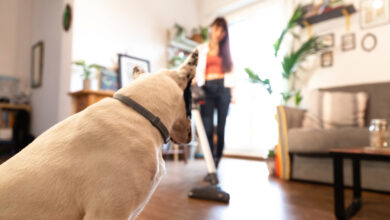How To Apply Sunscreen Correctly

“The reality is that most of us aren’t applying enough sunscreen, and then most of us are not reapplying as often as we should,” says Ivy Lee, MD, a board-certified dermatologist in Pasadena, California. “If you aren’t using the right amount of product, you aren’t getting as much protection as you might think.”
When you use sunscreen incorrectly, you’re leaving yourself open to premature aging (wrinkles, sagging, and hyperpigmentation) or much worse, skin cancer.
“Skin cancer is the most common form of cancer, and it is something that is so easily prevented,” says Dr. Lee. “Current estimates are that one in five Americans will develop skin cancer in their lifetime, and nearly 20 Americans die from melanoma every day. Unprotected exposure to ultraviolet light from the sun is the most preventable risk factor for skin cancer, making it critical to protect your skin outdoors.”
Applying sunscreen correctly ensures you’re getting the best protection. Below, seven dermatologists share everything you need to know about how to apply sunscreen.
How to apply sunscreen correctly, according to dermatologists
1. Use a sunscreen that’s broad-spectrum and has an SPF of 30 or higher
First things first, you want to make sure the sunscreen you’re applying is a good one. Broad-spectrum means you’re getting protection from both UVB rays (the ones that cause redness and sunburns) and UVA rays (the ones that cause skin cancer, hyperpigmentation, and premature signs of aging). SPF stands for Sun Protection Factor and dermatologists recommend that you use sunscreen with a minimum of SPF 30. “SPF 30 offers sunscreen protection from 97 percent of UVB light, an SPF 50 offers sunscreen protection of 98 percent, and an SPF 100 protects against 99 percent,” says Debra Jaliman, MD, a board-certified dermatologist in New York City. So the higher an SPF you use, the better your protection. (Also, make sure it’s not expired.)
2. Start with dry skin
“If you put a mineral sunscreen on wet skin, it doesn’t go on,” says Shirley Chi, MD, a board-certified dermatologist in Southern California. And while chemical sunscreen may blend into wet skin, it’s not going to work as well. “The way chemical sunscreens work is that they actually interact with your stratum corneum, with the top layer of your epidermis, to absorb ultraviolet rays so that they don’t go into your skin and do damage. If you’re applying it to wet skin, then that’s going to affect the absorption of the chemical sunscreen.” Then, let the sunscreen dry before you put on any makeup.
So if you’re doing your morning skin-care routine, wait a few minutes between applying your last skin-care product and your SPF to ensure it’s going on dry skin. “Your skin-care routine should take several minutes,” says Dr. Chi. If you’re applying to your body, make sure it’s fully dry—so if you’re wet, towel off and then let it air dry.
3. Lay it on thick
“If you only apply half as much SPF 30 as you need, you’re really only getting SPF 15 protection,” says Dr. Lee. “To cover your body, use the amount of product you’d need to fill a shot glass, and for your face, make a peace sign and draw lines of product over two of your fingers.”
If you’re using a spray, “I always tell my patients to spray [one spot] for at least two seconds and then rub in with your hands,” says Mona Gohara, MD, a board-certified dermatologist in Hamden, Connecticut. “Don’t treat it like a perfume where you hope the droplets land correctly—actually rub in the spray.” For sticks, always apply sticks two times on the area being treated,” she adds.
4. Make sure to hit the most vulnerable spots
According to Elyse Love, MD, a board-certified dermatologist in New York City, your face, chest, back, shoulders, and the backs of your hands are the most prone to long-term sun damage. “This is because these are the areas of the body that are exposed to the sun almost year-round,” she says
5. Leave time after application and before you go into the sun
Sunscreen needs a bit of time to activate before it’s shielding your skin. So when you put on your sunscreen in the morning, wait at least 15 minutes before heading into the sun to ensure you’re protected.
6. Reapply, reapply, reapply
“Reapplication is recommended every two hours, or every 80 minutes if sweating or swimming, regardless of the SPF,” says Elizabeth Kream, MD, a board-certified dermatologist in New York City. “Even if you’re applying SPF 100, you must re-apply every two hours. This is simply because no matter how well a sunscreen is blocking the UV radiation, it wears off after a few hours.”
7. Slather it on every single day
When learning how to apply sunscreen, it’s important to remember that you should apply it every day, not just when you’re headed to the beach. The majority of sun exposure is casual and incidental, meaning you get it walking to the subway or to get lunch, or through your office window.
“Skin cancer prevention requires a comprehensive approach to protecting yourself against harmful UV radiation,” says Nima Gharavi, MD, the director of dermatologic surgery at Cedars-Sinai Medical Center. “The sun’s UV radiation reaches you even when you’re trying to avoid it—penetrating clouds and glass, and bouncing off snow, water, and sand.”
Here’s how to incorporate SPF into your makeup routine:
The best dermatologist-approved sunscreens to buy

Shiseido, Ultimate Sun Protector Lotion SPF 50+ Sunscreen — $25.00 to $66.00
“‘Ultimate’ is no joke, this stuff is the GOAT, writes Well+Good contributor Dominique Michelle Astorino. “I put this to the test in double-digit hours of direct sunlight in Hawaii (with sweat, saltwater, sand, wind, and agitated skin acting as an assault on my poor epidermis). And it protected me from all of it while acting like a gentle caress. Get you a girl who can do both! The consistency is like melted butter, but somehow not at all greasy on your skin. The scent is magical, the finish is velvety, the efficacy is *100 emoji*. Sprint to get this stuff ASAP.”

Supergoop!, Glowscreen SPF 40 — $22.00 to $38.00
If there’s one SPF I actually look forward to using, it’s the Supergoop! Glowscreen. Now available in four shades (Sunset, Golden Hour, Sunrise, and Dawn), it’s a shimmery chemical sunscreen that gives your skin the most gorgeous lit-from-within glow. The shimmer is super fine so it doesn’t look like you’re wearing glitter. Plus, it’s got hydrating hyaluronic acid and vitamin B5, soothing niacinamide, antioxidant-rich sea lavender, and blue-light filtering cocoa peptides.

Dr Loretta, Universal Glow Daily Defense Mineral Sunscreen Fluid SPF 40 — $50.00
“Created by dermatologist Dr. Loretta Ciraldo, this mineral sunscreen comes in a universally blendable shade and is full of anti-aging ingredients,” writes Well+Good contributor Cathy Nelson, who loves how this feels on her mature skin. “A few worth noting? Lipochroman, an antioxidant that protects against free radical damage and improves the appearance of fine lines, wrinkles, and dark spots; and Indian ginseng, which nourishes, smooths, and hydrates the skin while providing protection against HEV blue light and environmental aggressors. The zinc oxide formula has a creamy texture, gives just a hint of color, and feels amazingly hydrating. And the added defense against pollutants and indoor light from screens and devices is definitely a bonus.”

EltaMD, AOX Mist SPF 40 — $45.00
New from EltaMD, this face and body spray uses 100 percent zinc oxide, a mineral sun blocker that is naturally white, to protect the skin from both UVA and UVB rays. When you spray it on, it internationally disperses white “to ensure you don’t miss a spot when applying. But once you rub it in, it turns totally clear. Plus, it nourished your skin with antioxidant-rich vitamin C and vitamin E and hydrating coconut extract and glycerin.

Tower28, Sunnydays SPF 30 — $32.00
If you’re looking for a tinted option that doubles as a foundation, reach for this one from Tower28. It’s the only complexion product to have the Seal of Acceptance from the National Eczema Association, meaning it’s perfect for sensitive skin. I love the way this product goes on. It provides just enough coverage while still allowing me to look like myself. I put a few dabs on my face and then blend it out with a sponge. It’s light enough that you can apply it with just your fingers, but if you’re like me and prefer applying complexion products with a tool, you don’t have to worry about the formula being so watery that a sponge or brush would soak it all up.
Our editors independently select these products. Making a purchase through our links may earn Well+Good a commission.


